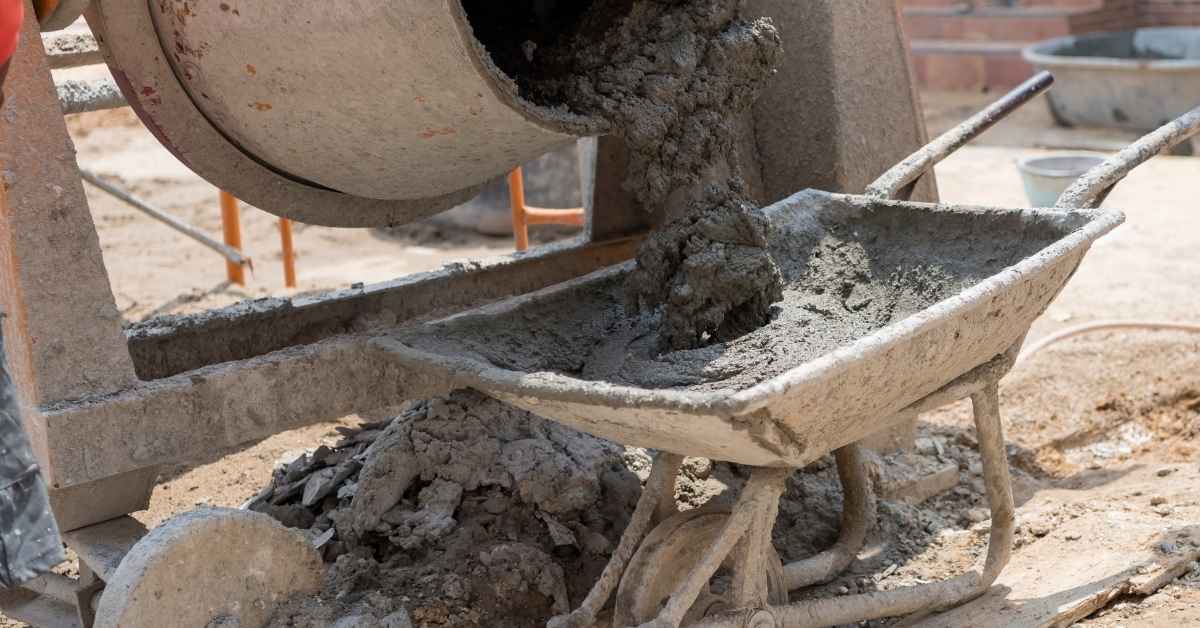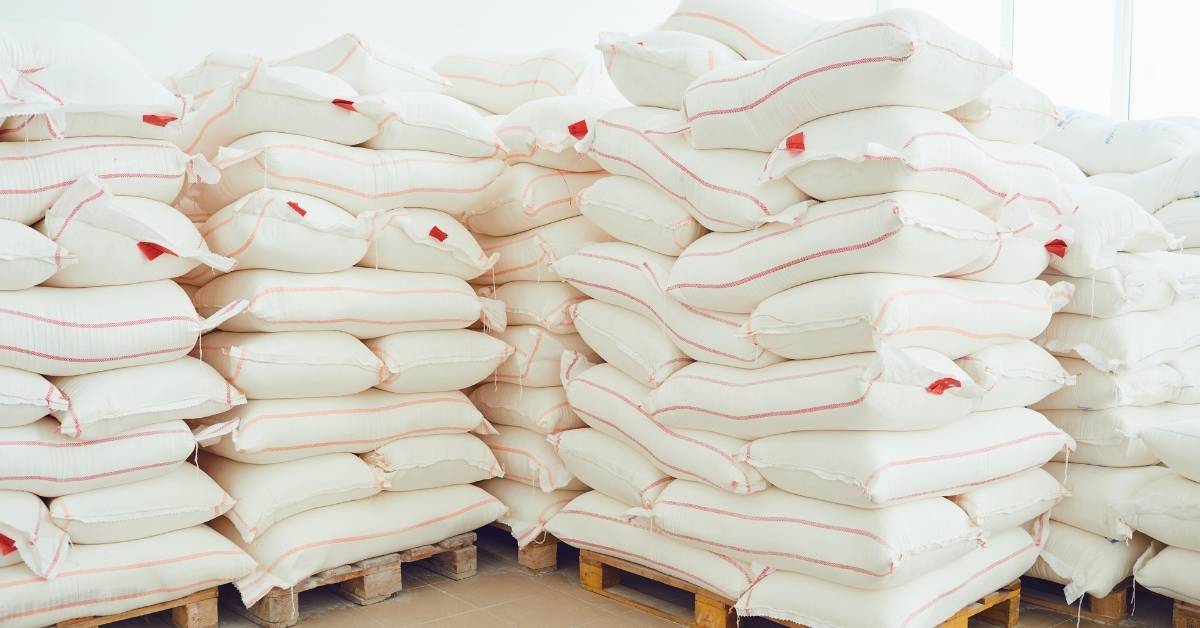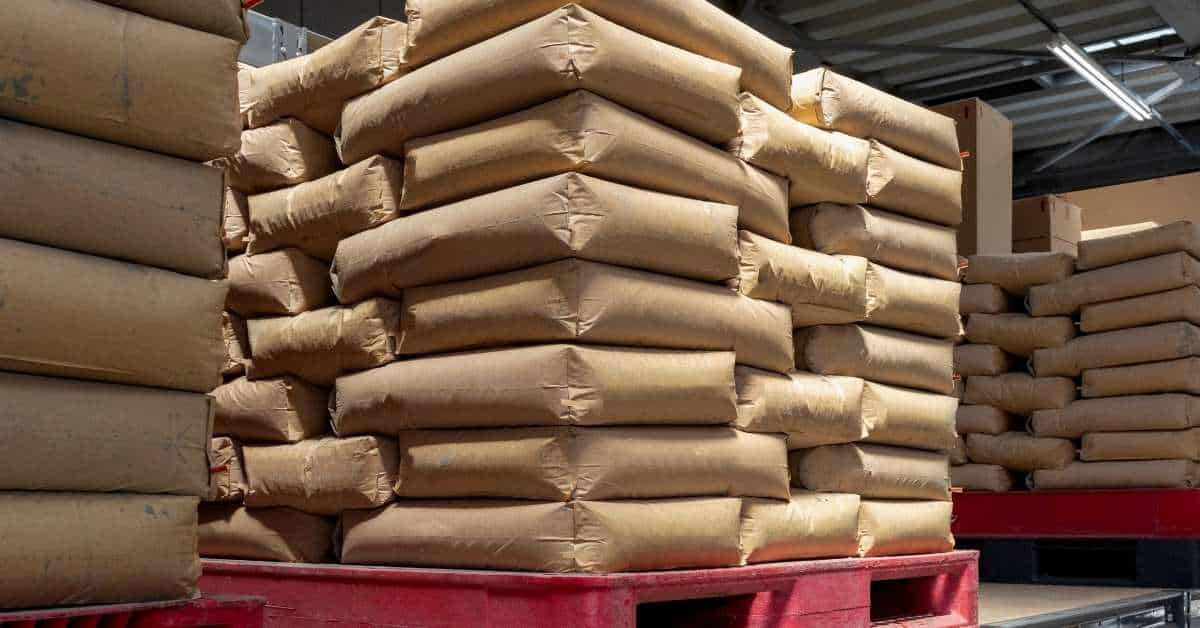Key Takeaways
- Use waterproof storage containers like heavy-duty plastic bins or airtight buckets to keep cement dry.
- Monitor humidity levels with a hygrometer, aiming for below 60% to maintain cement quality.
- Elevate storage containers off the ground using pallets or shelves to prevent moisture seepage.
- Implement ventilation solutions, such as fans or dehumidifiers, to improve airflow and reduce humidity.
Introduction
Storing cement in a humid garage requires careful attention to both the environment and the materials used for storage. High humidity can lead to clumping and hardening, making the cement unusable, so it is essential to implement effective storage solutions that mitigate moisture exposure. To maintain the quality of cement in such conditions, it is important to assess the garage’s humidity levels and temperature fluctuations. By utilizing appropriate supplies, such as waterproof containers and desiccants, you can create a controlled environment that keeps the cement dry and ready for use.
Essential Supplies and Equipment
To store cement effectively in a humid garage, you need the right supplies and equipment. This section outlines the essential items to keep your cement dry and usable.
- Waterproof Storage Containers: Use heavy-duty plastic bins or airtight buckets with secure lids to protect cement from moisture.
- Desiccants: Silica gel packets or moisture-absorbing crystals help control humidity inside storage containers.
- Plastic Sheeting: Use heavy plastic to cover cement bags or line storage areas, creating a moisture barrier.
- Tarps: Waterproof tarps can protect cement bags stored outside or in unsealed areas.
- Labels: Mark containers or bags with waterproof labels noting the date of purchase and type of cement for easy identification.
- Temperature and Humidity Monitor: A hygrometer helps track humidity levels in your garage, so you can act if they rise too high.
- Shovel or Scoop: Use a sturdy shovel or scoop for transferring cement from bags to containers easily and cleanly.
- Moisture-Resistant Bags: Use heavy-duty, moisture-resistant bags for unpackaged cement to add extra protection.
- Ventilation Fans: Install a small fan to circulate air, reducing humidity and preventing moisture buildup.
- Flooring Protection: Elevate storage containers off the ground with pallets or shelves to prevent moisture seepage.
- Regular Inspections: Check stored cement periodically for moisture or clumping, and replace desiccants as needed.
- Sealable Plastic Bags: For smaller quantities, sealable bags offer extra moisture protection, especially after opening larger bags.
- Heavy-Duty Gloves: Protect your hands from irritation and injuries while handling cement and other materials.
- Measuring Tools: Use a digital scale or measuring cup to ensure accurate mixing ratios for projects.
- First Aid Kit: Keep a basic first aid kit handy for minor accidents while working with cement and tools.
Gathering these supplies creates a solid foundation for storing cement effectively, ensuring it remains usable despite humidity challenges. Aim to maintain a humidity level below 50% for optimal cement storage. Regularly monitor conditions, especially during humid seasons, to keep your supplies in top shape.
Consider using a dehumidifier if your garage retains moisture, as it can significantly improve the storage environment. Store cement at a consistent temperature between 50°F and 80°F to maintain its integrity. Ensure the storage area is clean and free from debris to avoid contamination.

Assessing Your Space and Conditions
Before storing cement in a humid garage, evaluate the space and environmental conditions. This helps you implement effective storage solutions to keep the cement usable.
Start by checking the garage’s humidity levels. Use a hygrometer to measure moisture in the air. Cement should ideally be stored where humidity is below 60%.
If your garage exceeds this, consider extra protective measures.
Next, assess temperature fluctuations. Extreme changes can affect cement integrity. Aim for a stable temperature between 50°F and 85°F (10°C to 29°C) to maintain quality.
Inspect for water sources like leaks or condensation. Check areas where moisture collects, especially near windows, doors, or unsealed concrete floors. Addressing these issues helps reduce humidity and prevents cement from hardening prematurely.
Consider garage ventilation. Proper airflow reduces humidity. If possible, install vents or a dehumidifier for a drier environment.
Regularly opening windows or doors improves air circulation. Inspect the garage’s structural integrity for cracks or gaps that allow moisture in. Seal these to protect the cement.
Steps to Ensure Optimal Storage Conditions:
- Check garage insulation to maintain stable temperatures.
- Install a moisture barrier on unsealed floors to minimize dampness.
- Use desiccants or moisture-absorbing materials to reduce humidity.
- Regularly monitor conditions and adjust strategies based on seasonal changes.
Remember, humidity levels can fluctuate with the seasons. During warmer months, humidity may increase, so take proactive measures to protect your cement year-round.
Quick Facts
Time: Typically between 50°F and 85°F (10°C to 29°C) for temperature; humidity should be below 60%.
Pitfalls: Neglecting to address leaks or condensation can lead to premature hardening of cement.
Best Practices: Regularly monitor humidity and temperature, and implement ventilation or moisture barriers as needed.
Detailed Instructions for Proper Storage
Storing cement properly is key to keeping it usable, especially in humid garages. Follow these detailed instructions to maintain your cement in top condition.
- Select a suitable container for your cement. Use airtight plastic bins or heavy-duty bags that seal tightly.
- Avoid cardboard boxes, which absorb moisture.
- Label each container with the purchase date and cement type for easy identification.
- Choose a storage location that is dry, cool, and well-ventilated.
- Elevate containers off the ground using pallets or shelves to prevent floor moisture from seeping in.
Consider using desiccants like silica gel packets or calcium chloride to absorb excess moisture. Place these inside the containers and check them regularly, replacing as needed to keep the environment dry.
Monitor storage conditions periodically. Look for signs of moisture or clumping in the cement. If you find any issues, act immediately by relocating the cement or improving ventilation.
Failure Modes & Fixes
- Mode: Using cardboard boxes for storage can lead to moisture absorption and spoilage. Fix: Use airtight plastic bins or heavy-duty bags that seal tightly.
- Mode: Storing cement directly on the ground can expose it to moisture. Fix: Elevate containers off the ground using pallets or shelves.
- Mode: Ignoring signs of moisture or clumping can render cement unusable. Fix: Monitor storage conditions regularly and relocate cement if issues are detected.
Potential Challenges and Solutions
Storing cement in a humid garage can be tricky, but understanding the challenges and solutions can help maintain its quality.
Moisture infiltration is a major issue, causing cement to clump or harden. Consider these solutions:.
- Use airtight containers: Store cement in sealed plastic buckets or bins to keep moisture out.
- Desiccants: Add silica gel packets or other moisture absorbers in storage containers.
- Ventilation fans: Install fans to improve airflow and reduce humidity.
- Regular checks: Use a hygrometer to keep humidity below 60%.
Temperature fluctuations can also affect cement integrity. Try these strategies:.
- Insulation: Insulate the storage area to stabilize temperature and prevent moisture buildup.
- Location: Keep cement off the ground on pallets or shelves to avoid floor dampness.
Improper sealing of cement bags may lead to hardening. Prevent this by:.
- Repackaging: Transfer cement to airtight containers if the original packaging is damaged.
- Labeling: Mark containers with the purchase date to use older cement first.
Addressing these challenges helps keep cement usable in a humid garage. Additionally, poor ventilation can worsen storage issues. Enhance air circulation with these steps:.
Use cement within 3 to 6 months for best results. If stored longer, check its quality before use. By focusing on ventilation and storage duration, you can protect cement from environmental challenges.

Understanding the Importance of Proper Storage
Storing cement correctly is essential to keep it usable, especially in humid places like garages. Knowing the factors that affect cement storage helps prevent clumping and deterioration, ensuring your materials stay effective for your projects.
- Humidity is a major threat to cement.
- Moisture exposure can cause cement to harden prematurely, leading to waste and extra costs.
- Temperature control is also crucial.
- Store cement in a cool, dry place to avoid unwanted chemical reactions.
- Fluctuating temperatures can cause condensation, compromising cement integrity.
- Cement packaging significantly impacts storage.
Proper storage extends cement’s shelf life and maintains its quality, making it easier to use when needed. Original bags protect cement from moisture, but once opened, they become vulnerable. Resealing or transferring cement to protective containers can help with long-term storage.
By considering these factors, you can create an environment that preserves your cement’s quality and usability, leading to successful construction projects.
Helpful Hints and Alternative Methods
Discover practical tips and alternative methods for storing cement in humid garages. These strategies help extend cement usability and prevent it from hardening prematurely.
Use airtight containers for storage. High-quality plastic bins with tight lids keep moisture out. Ensure containers are clean and dry before adding cement.
Label each container with the storage date to track usability.
Add moisture-absorbing materials like silica gel packets or calcium chloride to storage containers. These materials absorb excess humidity and prolong cement life. Check and replace packets as needed.
Consider using a dehumidifier in your garage. It reduces humidity levels, creating a stable environment for cement. Monitor humidity regularly to adjust settings as necessary.
Use leftover cement promptly. If not needed soon, share with a neighbor or community project to prevent waste. These methods help maintain cement quality for future projects.
Periodically check the condition of stored cement. Inspect for moisture absorption or hardening to address issues early. Dispose of clumped or hardened cement to avoid compromising projects.
Store cement off the ground if possible. Use pallets or shelving to improve airflow and reduce moisture exposure from the floor. This also eases access to heavy containers.
Additional Tips:
- Keep the storage area well-ventilated to promote air circulation.
- Store cement in a cool, dry place, away from direct sunlight and heat sources.
- Use a moisture meter to monitor humidity levels in your storage area.
Incorporate these tips and methods into your storage routine to enhance cement longevity and usability, ensuring it remains in optimal condition for future projects.

Conclusion
In summary, effective cement storage requires a combination of proper supplies, environmental assessment, and ongoing maintenance. Utilize waterproof containers, desiccants, and moisture barriers to keep your cement dry and usable.
One challenge is managing humidity levels, especially in warmer months when they tend to rise. Additionally, ensuring proper ventilation can sometimes be overlooked, leading to moisture buildup.
To overcome these challenges, regularly monitor the humidity and temperature in your storage area, and take proactive measures such as installing a dehumidifier or sealing any. leaks.. This will help maintain optimal conditions for your cement.
Now is the time to evaluate your garage and make the necessary adjustments to ensure your cement stays in excellent condition. Start implementing these strategies today for long-lasting results.
FAQ
What are the best containers for storing cement in a humid garage?
Heavy-duty plastic bins or airtight buckets with secure lids are ideal for storing cement. These containers protect the cement from moisture and help maintain its usability.
How can I monitor humidity levels in my garage?
Using a hygrometer is an effective way to measure humidity levels in your garage. Aim to keep humidity below 60% to ensure the quality of your cement is preserved.
What should I do if my garage is too humid for cement storage?
If humidity levels exceed the ideal range, consider using a dehumidifier to improve the environment. Additionally, ensure proper ventilation and use moisture-absorbing materials like desiccants.
How often should I check my stored cement for moisture?
Regular inspections of stored cement are crucial, ideally every few weeks. Look for signs of moisture or clumping and take action immediately if any issues are detected.

